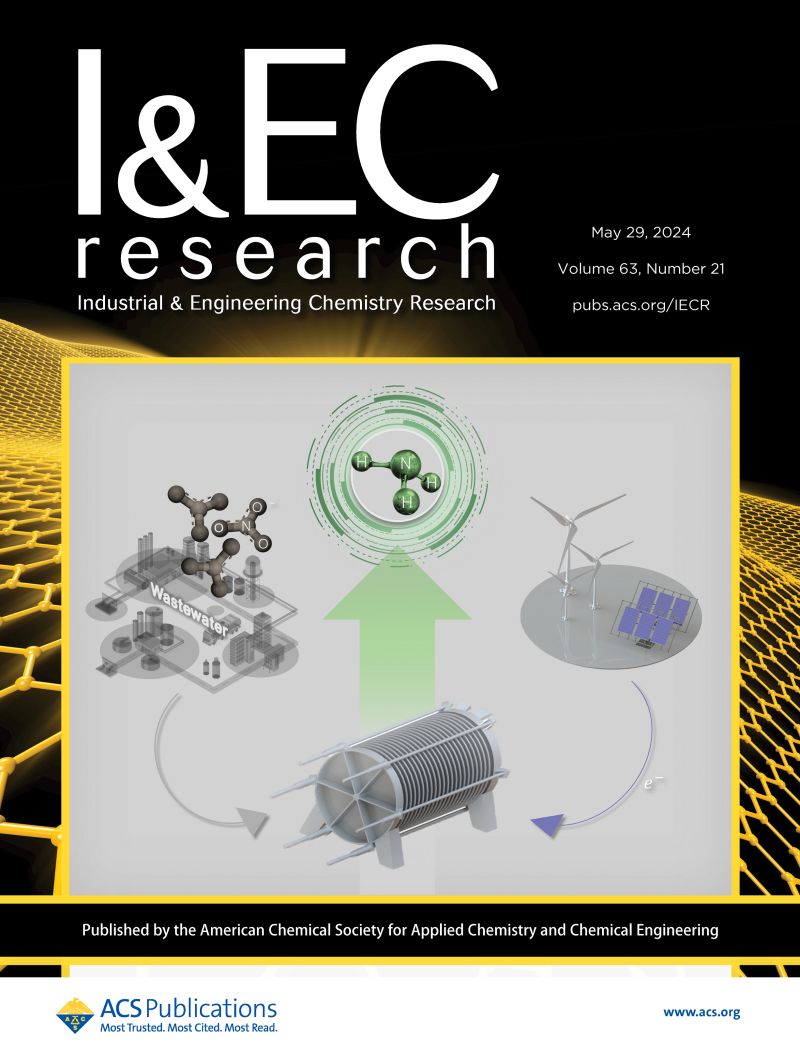Impacts of Sulfur Impurity and Acid Pretreatment on Catalytic Depolymerization of Corn Cob Lignin
IF 3.8
3区 工程技术
Q2 ENGINEERING, CHEMICAL
引用次数: 0
Abstract
When fractionating corn cobs using the acetosolv process, the type of acid catalyst and their concentrations significantly affect the structure of the resulting lignin fraction, as well as its catalytic deconstruction to aromatic monomers. Gel permeation chromatography (GPC) results show that the average molecular weight (∼55,750 g/mol) of the sulfuric acid-pretreated corn cob lignin (H2SO4-CCL) is much greater than that (∼39,400 g/mol) of hydrochloric acid-pretreated CCL (HCl-CCL) at similar acid concentrations, suggesting increased condensation reactions when using sulfuric acid. Furthermore, a significant amount of bound sulfur content (∼2900 ppm) was measured in H2SO4-CCL. This sulfur presence poisons the Pd/C catalyst used in the downstream catalytic conversion of the lignin in methanol to form monolignols and derivatives thereof. X-ray photoelectron spectroscopy (XPS) results reveal the presence of both sulfide and sulfate groups on the surface Pd sites, rendering them inactive and amenable to possible leaching. Elemental mapping of spent catalysts using scanning transmission electron microscopy-high angle annular dark field (STEM-HAADF)/energy-dispersive X-ray (EDX) technique corroborate the overlapping presence of Pd, S, and O in the micrographs. 2D 1H/13C HSQC nuclear magnetic resonance (NMR) spectroscopy reveals that the use of H2SO4 preserves aryl ether linkages only at low concentrations. In contrast, the use of HCl in the acetosolv process preserves such linkages even at higher concentrations while also mitigating sulfur poisoning of the Pd/C catalyst. Consequently, the yield of aromatic monomers during catalytic fractionation of HCl-CCL was doubled compared to that of H2SO4-CCL under identical operating conditions.

硫杂质及酸预处理对玉米芯木质素催化解聚的影响
采用乙酰溶剂法对玉米芯进行分馏时,酸催化剂的类型及其浓度显著影响所得木质素组分的结构,以及其对芳香单体的催化分解。凝胶渗透色谱(GPC)结果表明,在相似酸浓度下,硫酸预处理的玉米芯木质素(H2SO4-CCL)的平均分子量(~ 55,750 g/mol)远大于盐酸预处理的木质素(~ 39,400 g/mol),表明使用硫酸时,缩合反应增加。此外,在H2SO4-CCL中测量了大量的结合硫含量(~ 2900 ppm)。这种硫的存在毒害了下游催化转化木质素在甲醇中形成单木质素及其衍生物时使用的Pd/C催化剂。x射线光电子能谱(XPS)结果显示,表面Pd位点上存在硫化物和硫酸盐基团,使它们不活跃,易于浸出。利用扫描透射电子显微镜-高角环形暗场(STEM-HAADF)/能量色散x射线(EDX)技术对废催化剂进行元素映射,证实了显微照片中Pd、S和O的重叠存在。2D 1H/13C HSQC核磁共振(NMR)光谱显示H2SO4仅在低浓度下保留芳基醚键。相比之下,在乙酰溶剂工艺中使用HCl即使在较高浓度下也能保持这种联系,同时也减轻了Pd/C催化剂的硫中毒。结果表明,在相同的操作条件下,HCl-CCL催化分馏过程中芳香单体的产率比H2SO4-CCL的产率提高了一倍。
本文章由计算机程序翻译,如有差异,请以英文原文为准。
求助全文
约1分钟内获得全文
求助全文
来源期刊

Industrial & Engineering Chemistry Research
工程技术-工程:化工
CiteScore
7.40
自引率
7.10%
发文量
1467
审稿时长
2.8 months
期刊介绍:
ndustrial & Engineering Chemistry, with variations in title and format, has been published since 1909 by the American Chemical Society. Industrial & Engineering Chemistry Research is a weekly publication that reports industrial and academic research in the broad fields of applied chemistry and chemical engineering with special focus on fundamentals, processes, and products.
 求助内容:
求助内容: 应助结果提醒方式:
应助结果提醒方式:


